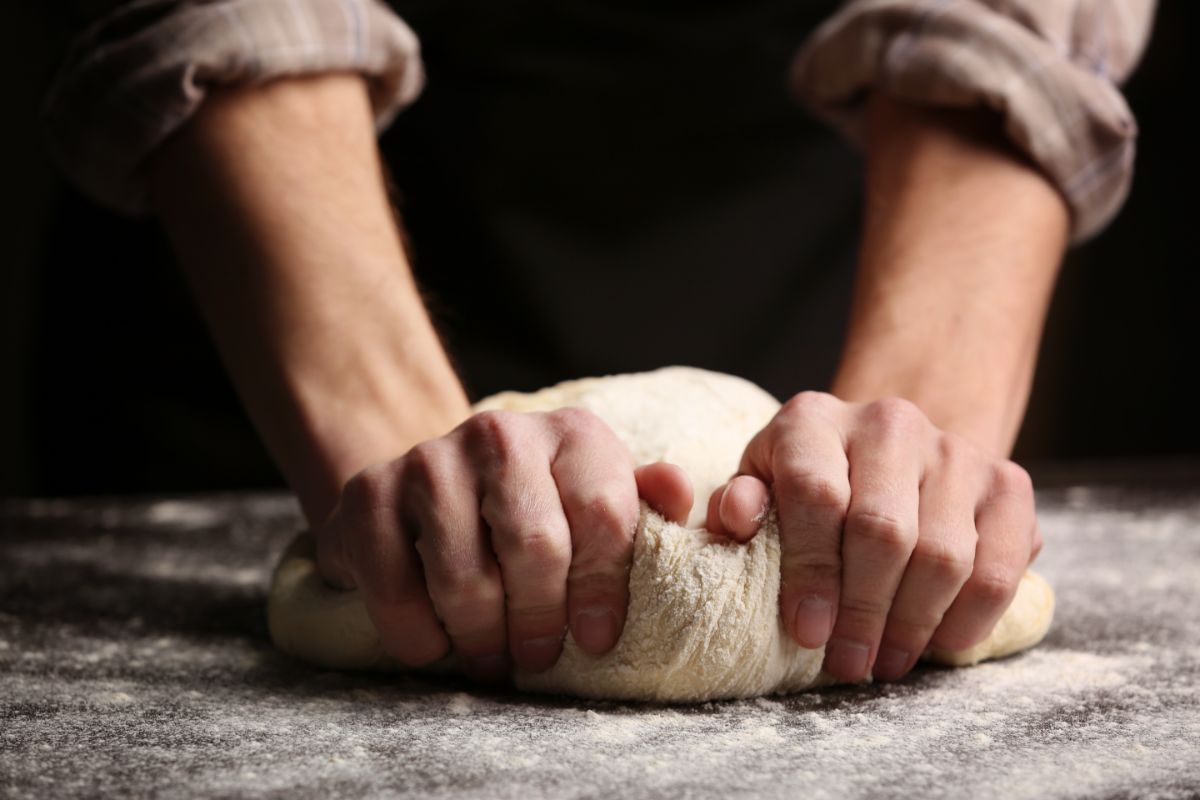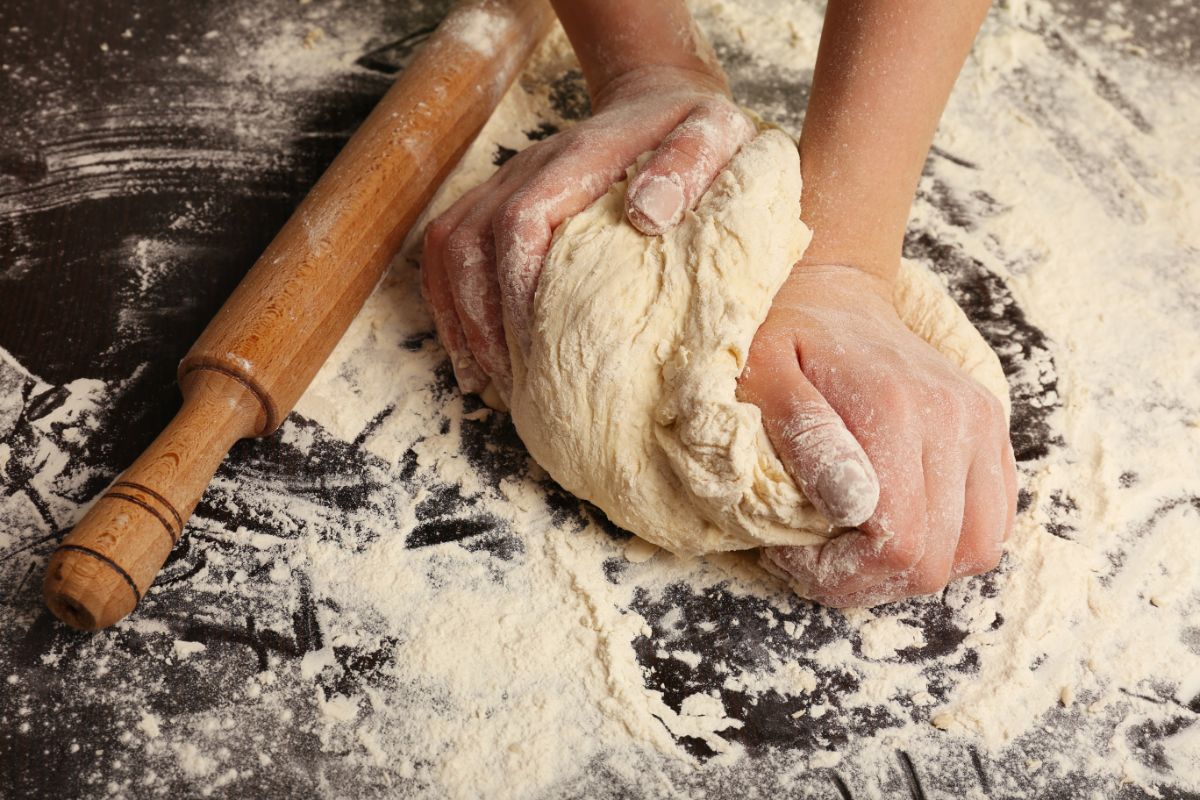Whether you have been baking for years or are new in the field, a few things remain mysterious as knowing when the dough is ready. If you are not keen enough, you can end up with a wobbly and messy dough that sticks almost everywhere.

So, how to tell when the dough is kneaded enough? There are five ways to know whether the dough is kneaded enough or not. The methods are: “windowpane test”, “poke test”, “shiny surface”, “ball keeps its shape” and “tired to knead anymore”.
Read more about these test methods below:
5 Methods to Test When Dough is Kneaded
1. Windowpane Test
One is through what is commonly called “windowpane test” In this process, you will take a pea-sized piece of your already prepared dough, flatten and pull it to form a thin translucent sheet that can allow the room light to pass through. If the pane tears apart before it gets thin enough it is very evident that you need to create some more gluten.
2. Poke Test
Secondly, you can opt for the poke test. Using your finger, give the dough a firm poke and leave it for about two minutes. In case the indentation fills back, then you are good to continue with the remaining processes of baking. On the other hand, if the “dimple” stays deep and not refilling, roll the sleeves and add some more gluten.
3. Shiny Surface
The third cue to properly do dough is the shiny surface. In the process of kneading, the dough will always start as a lumpy mass that is shaggy in nature. As the process continues, it develops into a smooth mound that is hard in nature. In the end, it should look completely smooth with a slight tacky touch.
4. Ball Keeps Its Shape
The fourth in the list of cues is when the ball keeps its shape. In this process, make a ball out of the dough and toss it in the air. In case the ball doesn’t shag, you are good to go. If the ball remains loosey and gooey then you need some more kneading.
5. Tired To Knead Anymore
The last cue is when you are just tired to knead anymore. As ridiculous as it may sound, this works for a lot of people. With kneading, there is trial and error. Chances are that you may get tired before the dough or otherwise.
However, for experienced bakers, tiredness around the arm is an indication that the dough is ready for other processes. On average, this period ranges from 10-12 minutes. Otherwise, factors such as temperature, moisture, type of flour used, and ability to mix the dough.
You can check some of these methods in the video below:
Is It Possible To Over Knead Dough?
Over kneading the regular dough using hand is a subject of debate. Chances are that you will get tired in the arms and hands before it is too late. However, some types of dough become overly hardy and gummy when kneaded for too long.

This includes the American Sandwich bread, brioche, pain de mie, potato bread and focaccia. These dough recipes require light-kneading for excellent textures and flavor. Their gluten development is limited to short kneading.
However, when using the electric mixer, chances of over-kneading is so high more so with a lack of keenness. You will know when the dough is over-kneaded by kneading it against the counter.
Toughness or denseness is a clear indication that the dough was over-kneading. Remember the main objective of any baker is to create an elastic dough that is easy to flatten out and fold. And, whose folds integrate perfectly. When the dough simply tears apart then be pretty sure that the mixer has over-kneaded it.
How Do You Know When The Dough Is Under-kneaded?
You will know that the dough is under-kneaded when it doesn’t stand the five aforementioned tests. Obviously, the under-kneaded dough tends to feel shaggy, floppy and loose. It tears easily when flattened into the pane.
The only therapy to under-kneading is going the extra mile to knead the dough for a little longer.
Effects Of Prolonged Kneading
Many people believe that the longer you need the better the dough and the tastier the resultant bread. That is a complete myth. There are negative effects that come with prolonged kneading.
By prolonged kneading, chances are that the dough will get overheated. As a result, it will undergo a quicker fermentation process. This results in a bread that lacks flavor.
Secondly, by kneading for so long, you will be exposing much of the dough’s surface to oxygen. As a result, it will become over-oxidized and get bleached. This is a causal factor to diminished flavor.
Thirdly, prolonged kneading causes the dough’s molecular bonds to break down. This results in a crumbly bread that you will not definitely like.
Should you throw an over-kneaded dough?
An over-kneaded dough is a splodge that is painstaking to roll and shape. Unfortunately, you cannot undo the damage once it occurs. The only way out of the mess is by letting the dough rise a little longer to relax.
By baking the dough, you will realize that the resultant bread is dense, with a hard crust and dry interior. The slices of the bread will be crumbly in nature. In short, over-kneading is ideal for bread-crumb baking.
Conclusion
Kneading is the basic concept behind the whole process of baking. It is what defines the quality of your bread in general. It helps in the development of strands thus allowing the dough to rise and proof properly.
While it’s of gross importance to understand the logic behind kneading and when to know when the dough is kneaded enough, it is worth noting that kneading doesn’t follow exact science.
You can under-knead or over-knead by a smaller range and still end up with a lighter, airier and tastier lough (open crumb)
While it is very true that going wetter can be messy and frustrating, it realizes excellent results if done properly. Secondly, always learn to set your own kneading time.
On average, this should range between 10-12 minutes for both pizza and bread dough. Anything more than that is a prolonged kneading. On the other hand, anything less than that is acceptable where the dough is clear and elastic (with no lumps and unmixed flour). In fact, if your hand is a bit warmer, it can take you only 5 minutes to wrap up the whole process.
